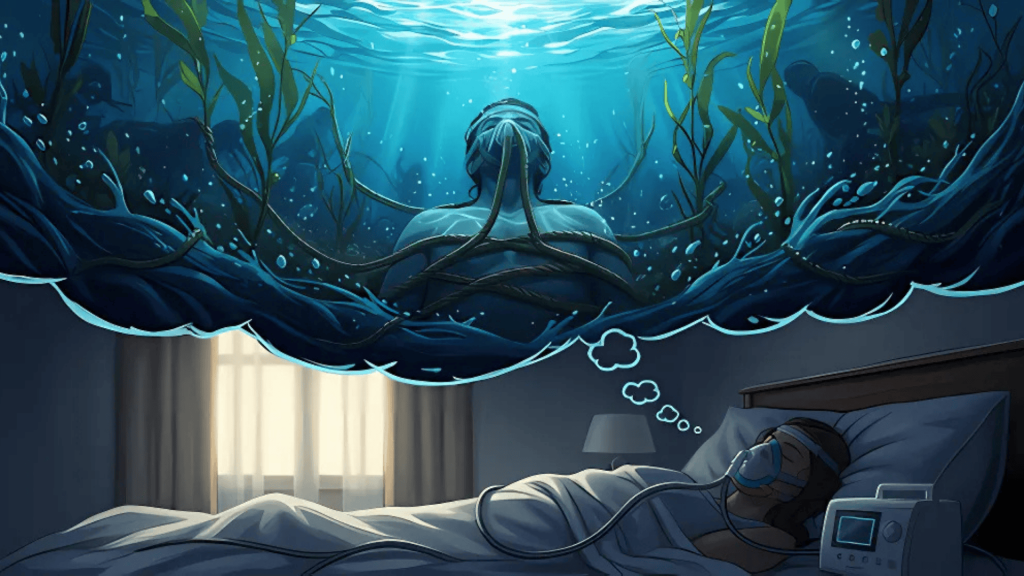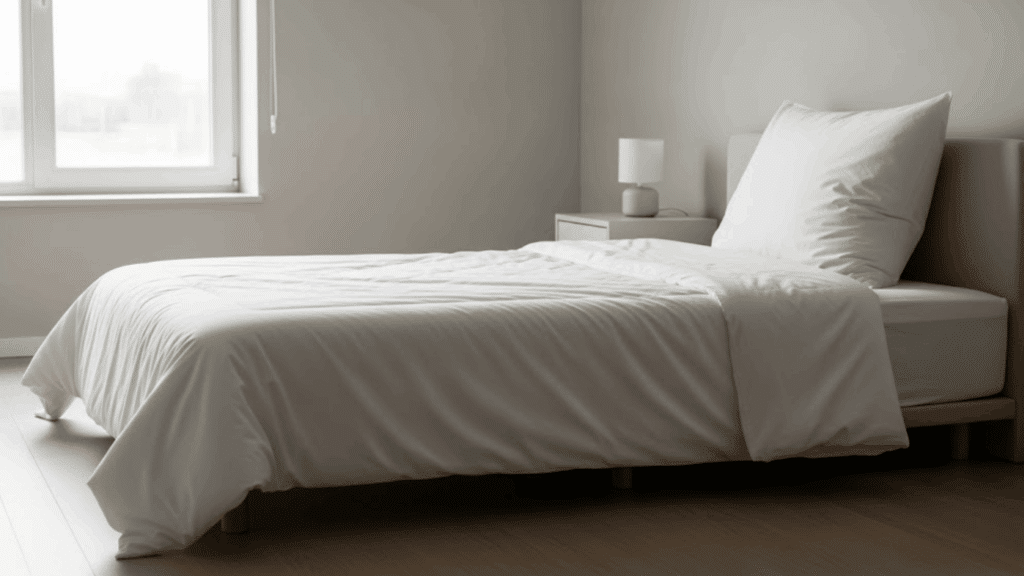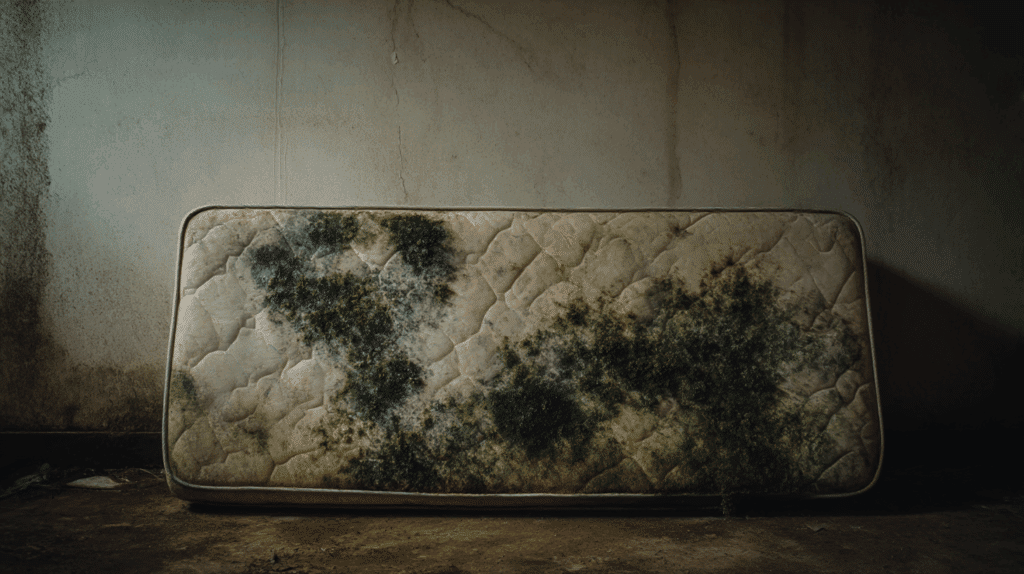What if your worst nightmares are actually trying to save your life?
That terrifying dream where you can’t breathe might not be random. Your brain could be sending you an urgent message about something happening while you sleep.
People with sleep apnea are three times more likely to have nightmares than those without the condition, according to sleep researchers.
Sleep apnea can turn your peaceful sleep into a horror movie. When your breathing stops during the night, your brain fights back with frightening dreams.
These nightmares are warning signs your body wants you to notice. Let’s figure out what your dreams are trying to tell you.
Sleep Apnea Dreams: What Are They & Why Do They Happen?
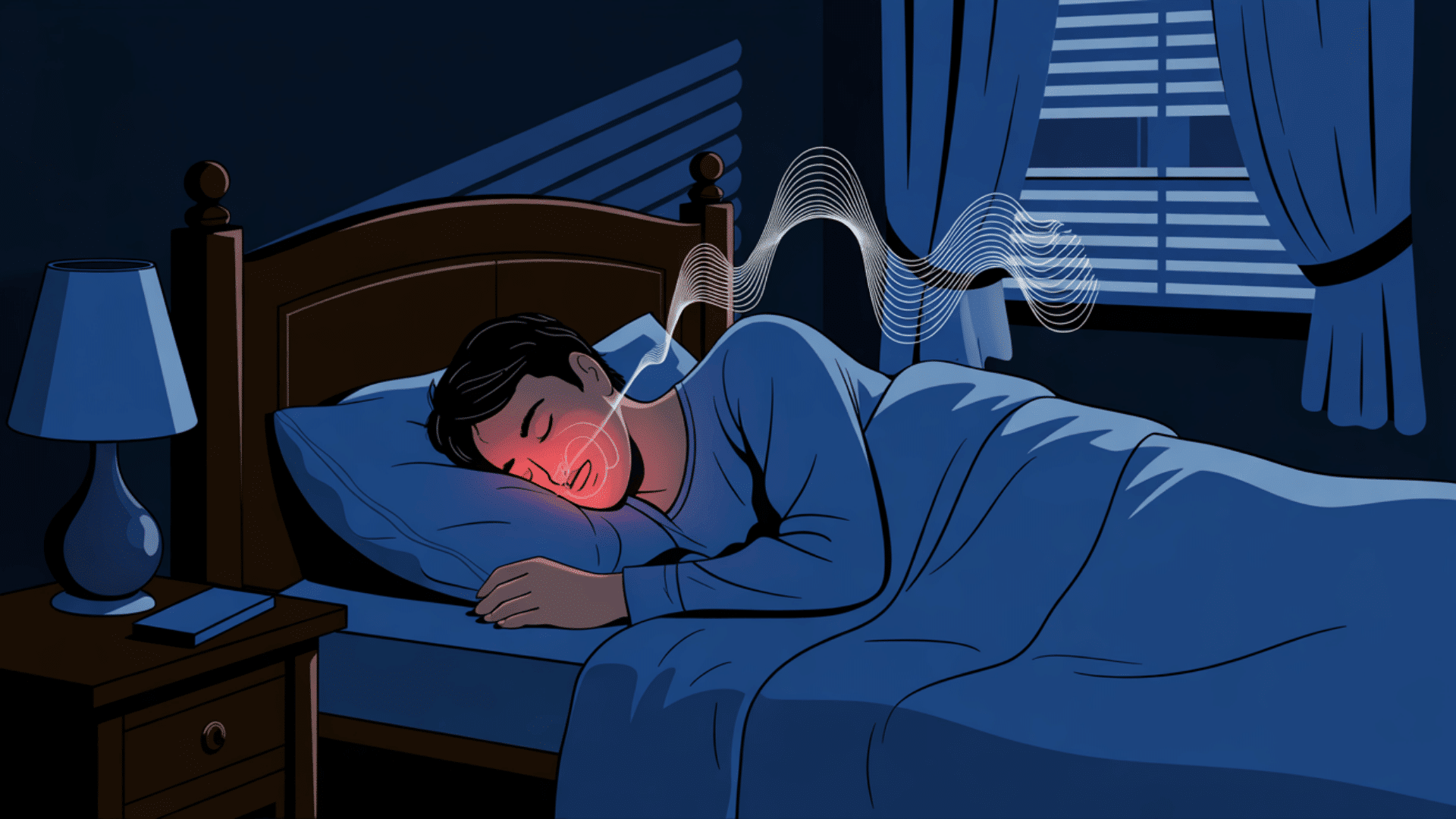
Sleep apnea is when your breathing stops and starts while you sleep. Your airway gets blocked, or your brain forgets to tell your muscles to breathe. This happens over and over throughout the night.
Think of sleep like a house with different rooms. You move through light sleep, deep sleep, and REM sleep in cycles. REM stands for Rapid Eye Movement – it’s where most of your dreams happen. It’s also when your muscles relax the most.
Here’s the problem: Sleep apnea hits REM sleep the hardest. When you can’t breathe properly, your body panics and wakes you up. This cuts your REM sleep short again and again.
Sleep Apnea and Nightmares: What’s the Connection?
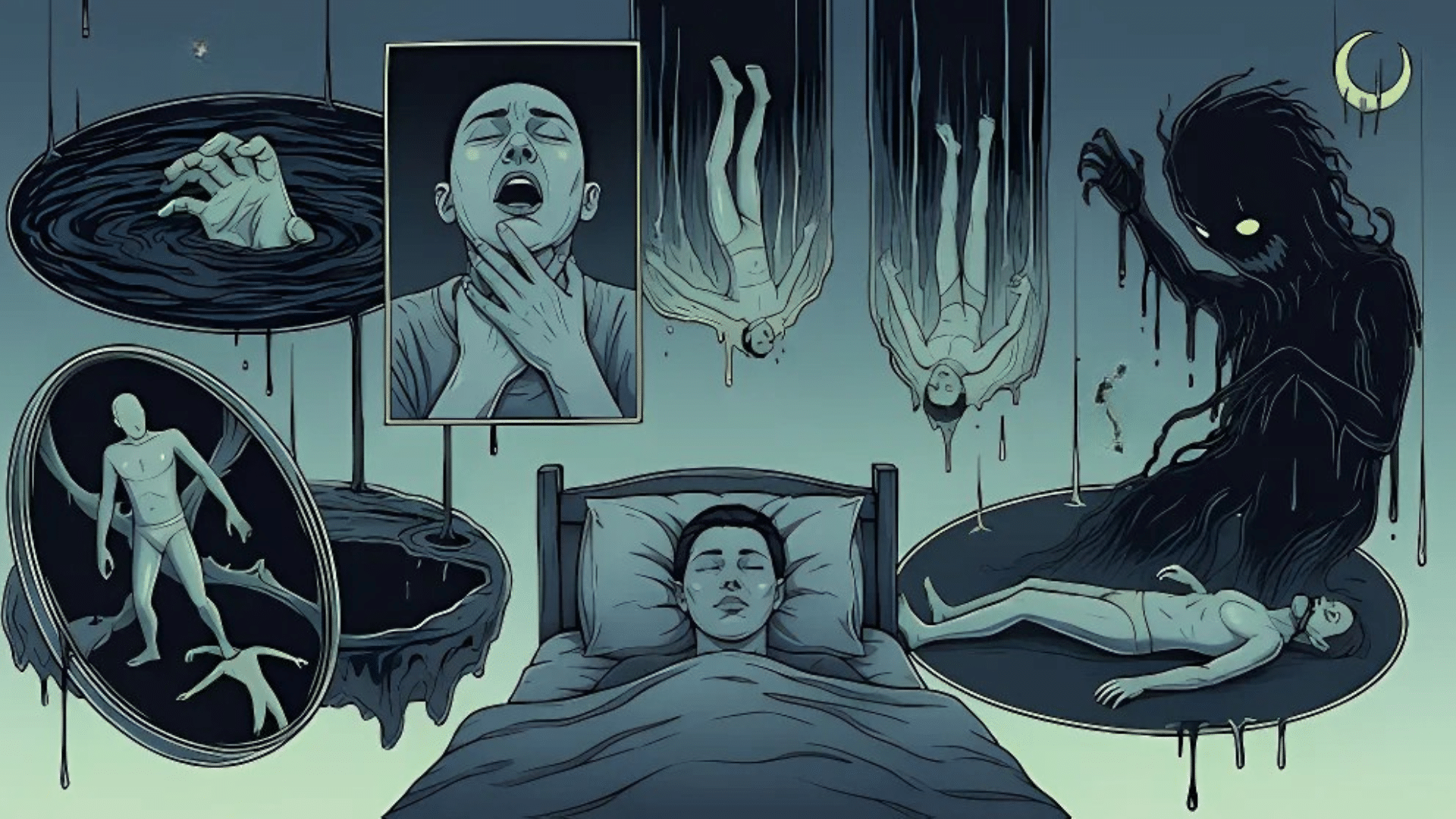
Some people with sleep apnea barely dream at all. Others experience the opposite – intense, scary nightmares that feel more real than regular dreams.
Your brain doesn’t understand medical terms like “sleep apnea.” Instead, it creates stories that match what your body is experiencing.
The most reported nightmare themes:
- Suffocation dreams – Being smothered by pillows or unable to breathe
- Drowning scenarios – Sinking underwater or being pulled down by currents
- Sleep paralysis – Feeling awake but unable to move or speak
- Falling nightmares – Dropping through space with no way to stop
- Feeling trapped – Dreams often involve being stuck or unable to escape
When your oxygen drops, your brain creates dream scenarios about danger and survival. It’s trying to wake you up and keep you alive.
REM Rebound and Vivid Dreaming
Some people with sleep apnea don’t lose their dreams – they get flooded with them instead.
Your brain needs a certain amount of REM sleep each night. When sleep apnea keeps interrupting this stage, your brain starts keeping a “REM debt.”
After several nights of broken sleep, your brain tries to catch up all at once. This creates what doctors call “REM rebound.”
The result: Super-intense, vivid dreams that feel more real than waking life.
Sleep lab finding: Patients who used CPAP therapy for the first time often reported “explosion of dreams” in their first week as their brain caught up on lost REM sleep.
Sleep deprivation also makes your brain more emotional and reactive. This turns regular dreams into dramatic, memorable experiences that stick with you all day.
The Science Behind Sleep Apnea Dreams

The research on sleep apnea and dreams tells two different stories. Scientists are still figuring out why people have such different experiences.
A 2019 study of 1,467 sleep apnea patients found that 68% reported fewer dreams, while 32% experienced more vivid nightmares.
Two different experiences:
- Fewer dreams – Sleep gets so broken up that they can’t remember dreaming
- Vivid nightmares – Incredibly intense dreams that they remember in detail
What triggers these changes?
| Cause | Dream Effect |
|---|---|
| Oxygen drops | Creates intense emotional dream content |
| Fight-or-flight response | Makes dreams feel more dramatic and scary |
| REM rebound | Floods you with extra-vivid dreams |
Mental Health Co-factors: Anxiety, Depression, PTSD
Sleep apnea rarely happens alone. Nearly 50% of people with sleep apnea also struggle with depression, according to clinical data.
How they connect:
Anxiety – Worried minds turn regular dreams into terrifying nightmares
Depression – Changes REM patterns and makes nightmares more intense
PTSD – Can make existing symptoms 3x more severe
The Vicious Cycle: Poor sleep from apnea → More anxiety/depression → Worse nightmares → Even less quality sleep
Treating both conditions together improves outcomes by up to 75% compared to treating just one.
Nightmares as a Red Flag for Sleep Apnea
Your dreams might be trying to save your life. When nightmares happen with other symptoms, they could signal something serious.
Warning signs to watch for:
Frequent choking or drowning nightmares three times per week aren’t normal. Dreams that wake you up gasping for air or with a racing heart need attention.
If you feel tired after eight hours in bed but have vivid nightmares, that’s a red flag.
Sleep specialists report that patients with both daytime fatigue and frequent suffocation dreams have an 85% chance of testing positive for sleep apnea.
Other symptoms include morning headaches, loud snoring, and difficulty concentrating. Your partner might notice breathing pauses during sleep.
Don’t ignore dreams where you can’t breathe. They might be your brain’s emergency alert system.
How CPAP Therapy Affects Dreaming
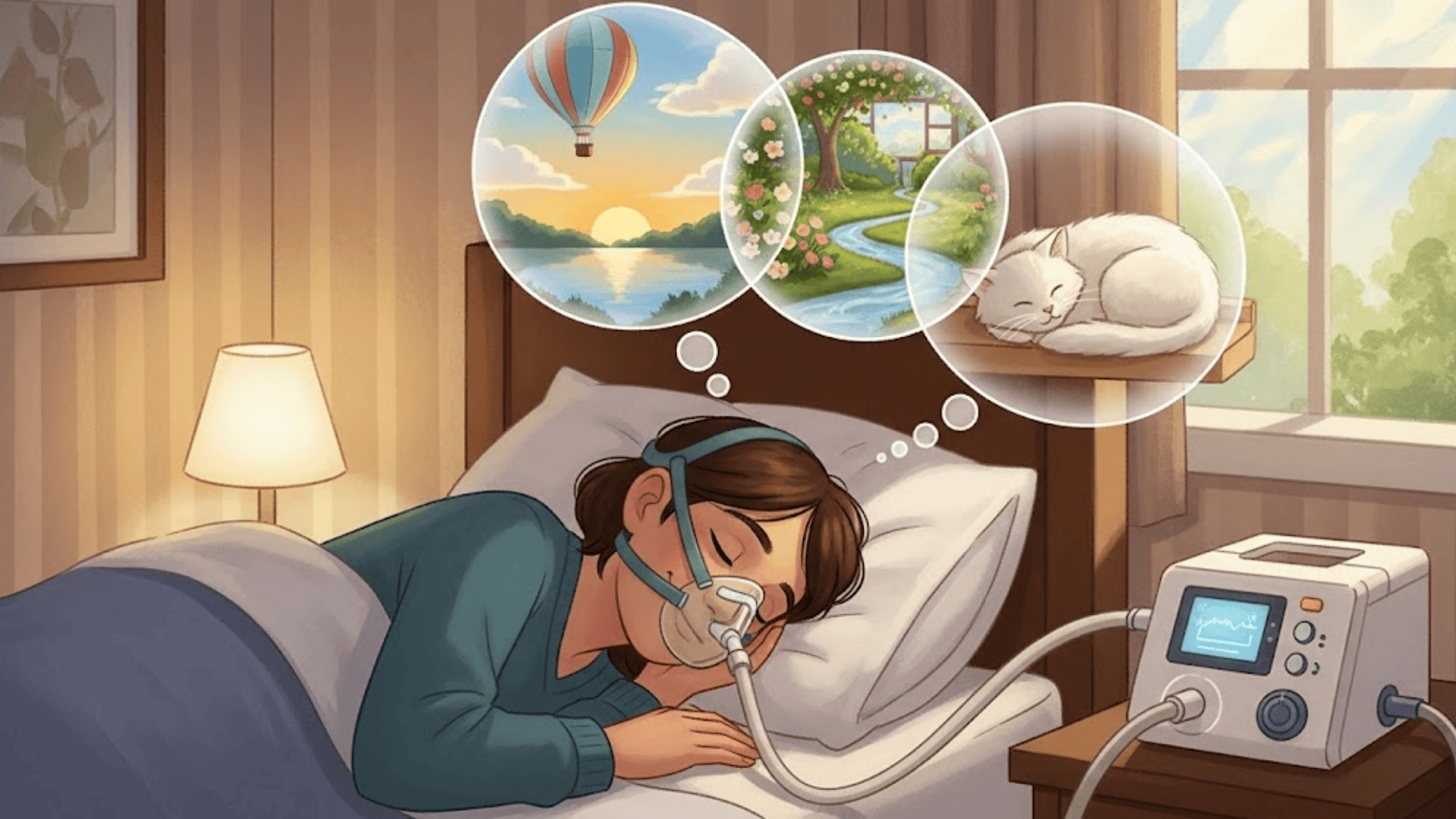
Remember those terrifying suffocation nightmares? CPAP therapy might make them disappear completely.
CPAP (Continuous Positive Airway Pressure) keeps your airway open all night long. No more breathing stops. No more oxygen drops. Your REM sleep becomes smooth and uninterrupted for the first time in years.
The dream transformation timeline:
| Week | What Happens to Your Dreams |
|---|---|
| Week 1 | Nightmares start decreasing, may have “dream surge” |
| Week 2-4 | Dreams become less intense and scary |
| Month 2+ | Normal, restful dreaming returns |
Most people notice changes within days. Instead of waking up scared and gasping, you wake up refreshed and calm.
Patient outcome data:Clinical studies show that 89% of CPAP users reported significant nightmare reduction within two weeks.
The “dream surge” phenomenon:
Some people experience incredibly vivid but pleasant dreams in their first few nights. After years of disrupted sleep, your brain finally gets the deep REM it’s been craving. Think of it as your brain celebrating its newfound ability to dream properly.
Other Treatment Options
CPAP isn’t your only choice for better sleep and dreams.
- Oral appliances work for mild cases. These devices move your jaw forward to keep your airway open. They’re quieter and easier to travel with than CPAP.
- Weight loss can be life-changing. Even 10-15 pounds reduces breathing interruptions significantly.
- Sleep hygiene basics – Stick to regular bedtimes, keep your room cool and dark, and avoid alcohol before bed.
Better breathing during sleep means better dreams. Your nightmare-filled nights can become a thing of the past.
Lifestyle Tips to Reduce Nightmares and Improve Sleep
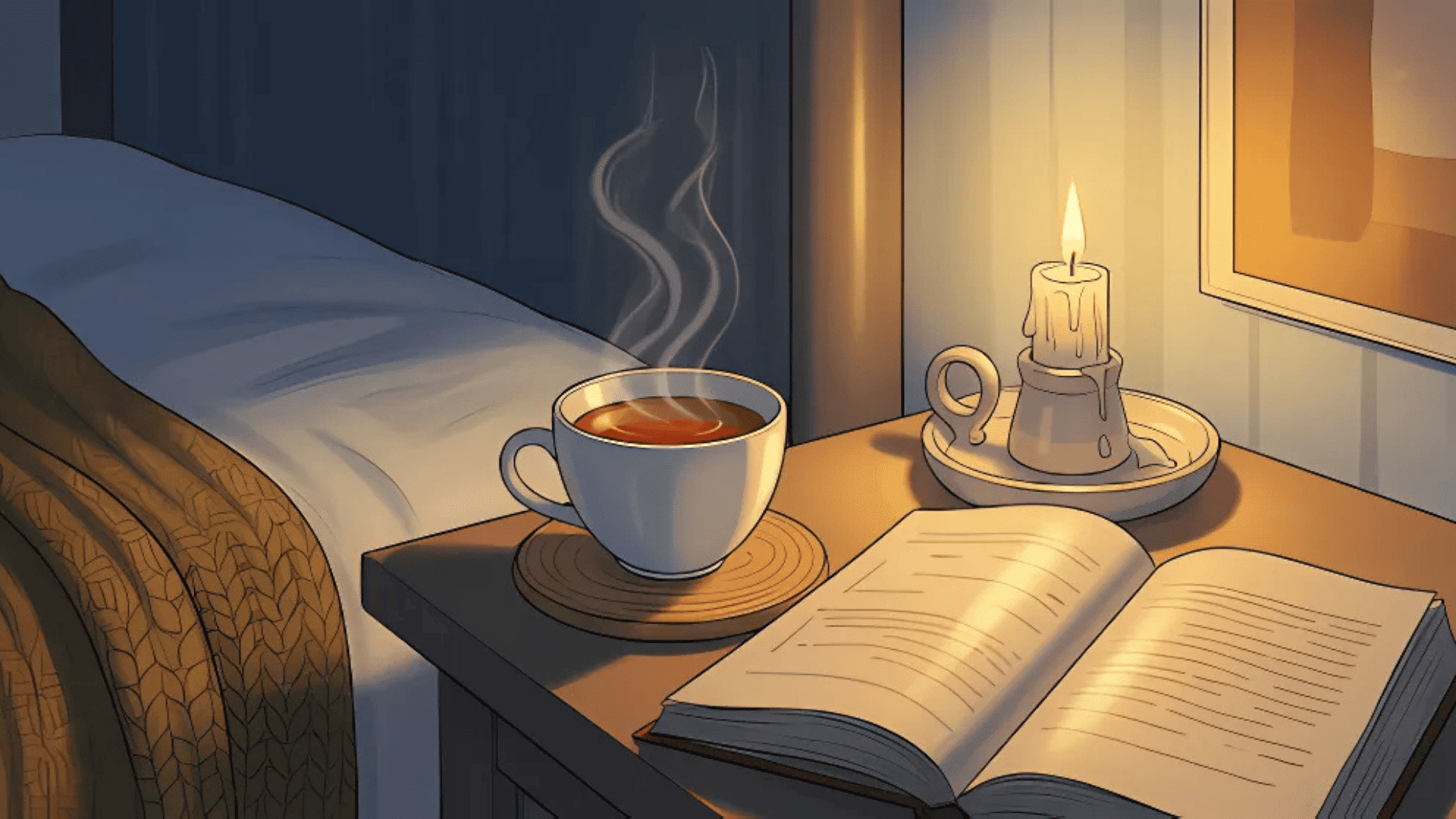
Create a nightmare-fighting sleep schedule:
Go to bed and wake up at the same time every day, even on weekends. Your brain loves predictability and will reward you with better sleep cycles.
Cut off caffeine after 2 PM and avoid alcohol three hours before bed. Both disrupt REM sleep and make nightmares worse. Put screens away an hour before bedtime – blue light tricks your brain into staying alert.
Keep your bedroom cool, dark, and quiet for peaceful dreams.
Track your patterns:
Keep a simple dream journal by your bed. Write down nightmare themes and triggers, like food or stress. Practice deep breathing exercises before sleep to calm your nervous system.
Research insight:Studies show that mindfulness practitioners have 40% fewer stress-related nightmares.
Simple breathing awareness during the day carries over into better sleep at night.
From Nightmares to Sweet Dreams
Your nightmares about drowning, choking, or being trapped aren’t just random, scary dreams. They’re your brain’s way of telling you something important about your sleep and breathing.
Sleep apnea doesn’t just steal your rest – it hijacks your dreams and turns them into nightly horror shows.
Whether it’s CPAP therapy, lifestyle changes, or working with a sleep specialist, solutions exist. Those terrifying nights can become peaceful, restorative sleep again.
Don’t let another night of frightening dreams go by without answers. If your nightmares involve breathing problems and you’re tired during the day, talk to your doctor about a sleep study.
Your best sleep – and sweetest dreams – are waiting for you.

